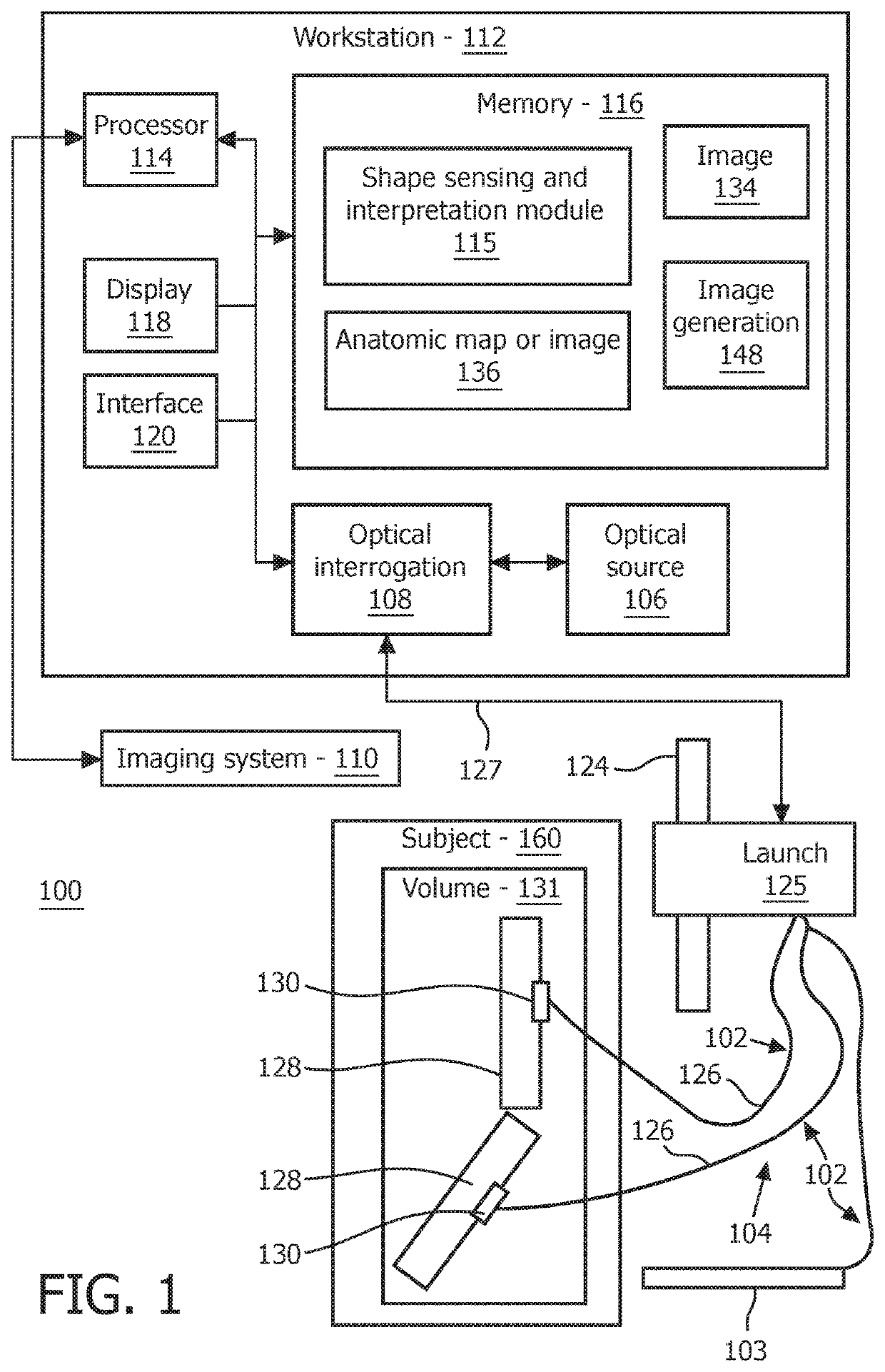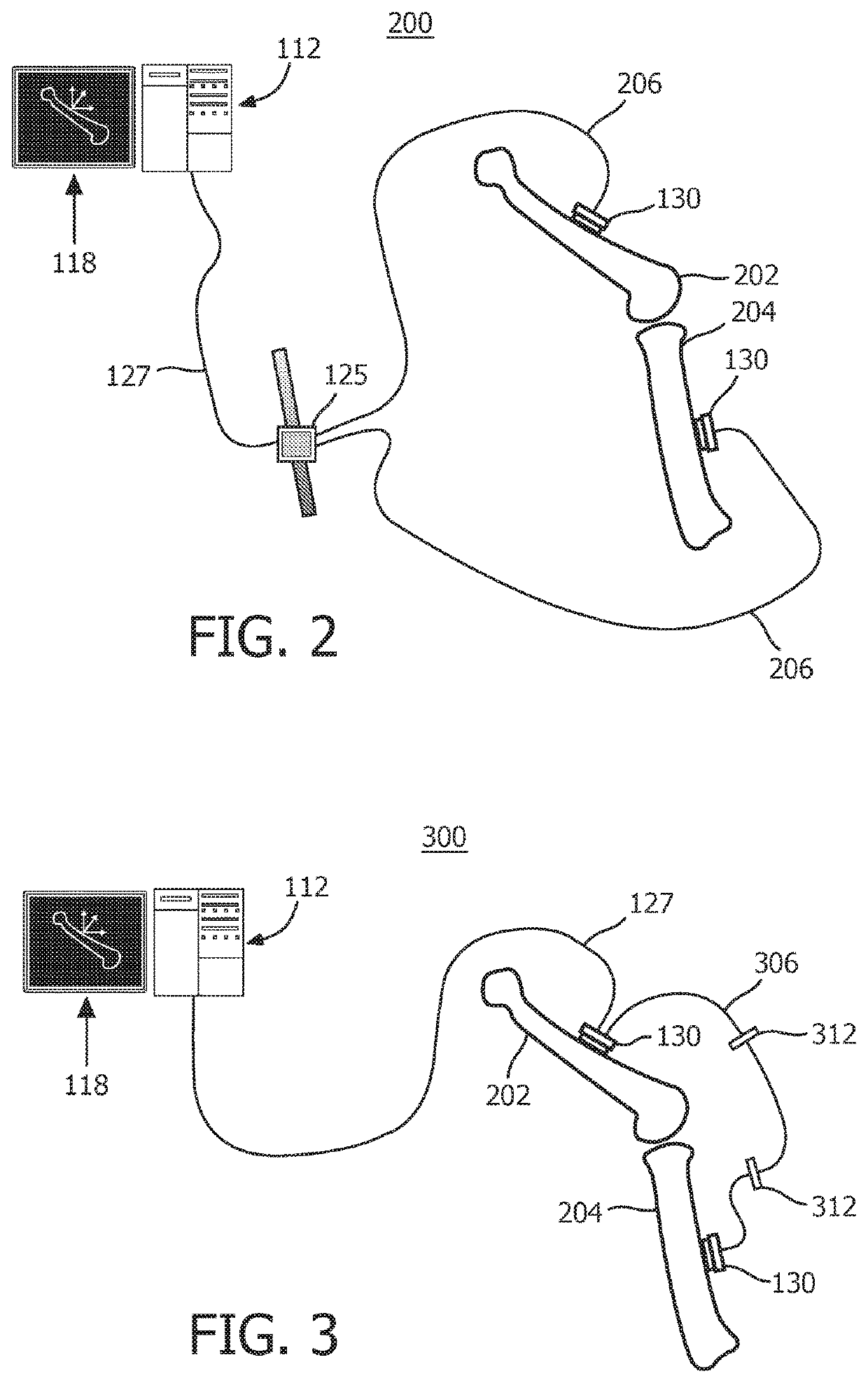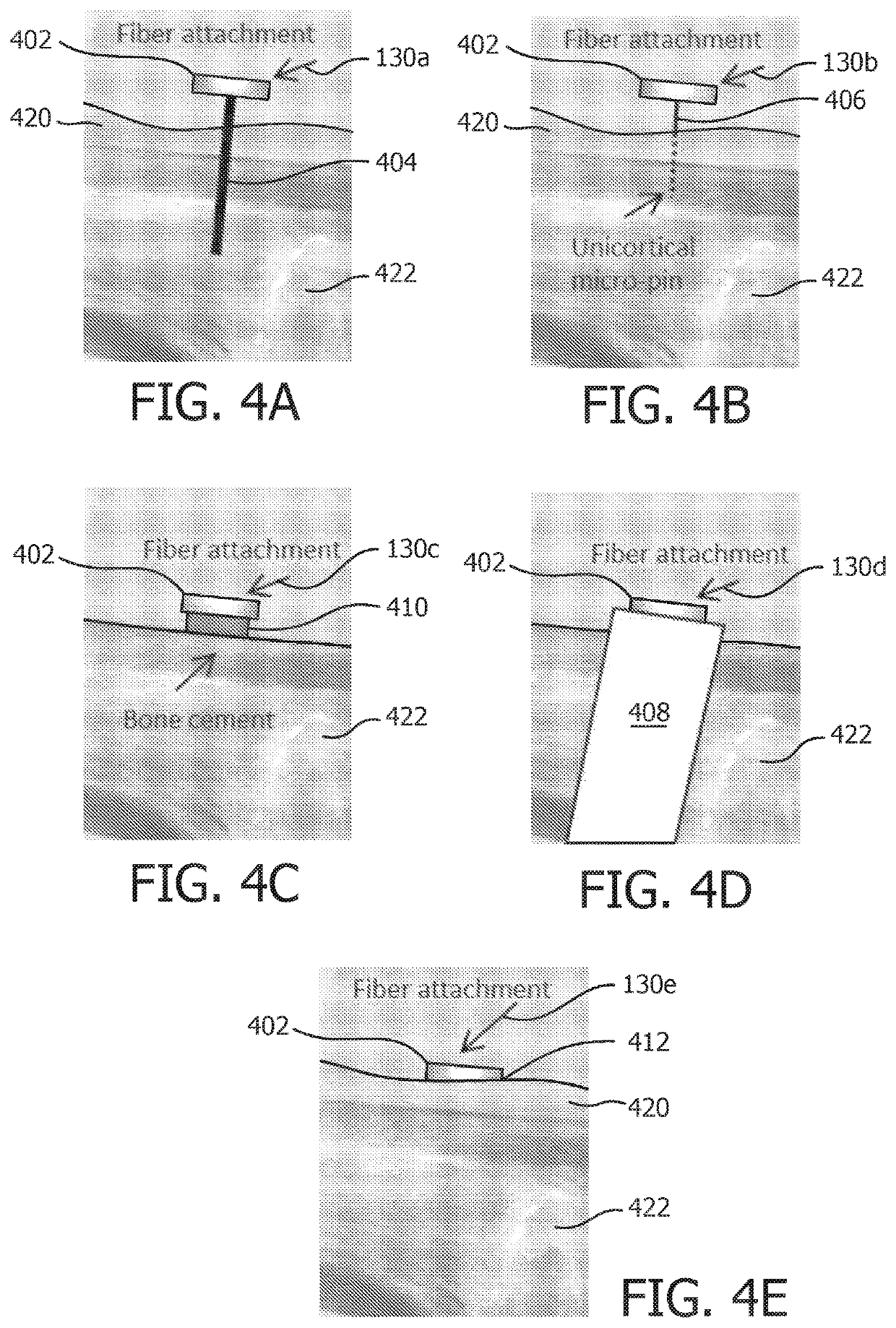Shape sensing for orthopedic navigation
a technology of shape sensing and orthopedics, applied in the field of shape sensing, can solve the problems of not only requiring line-of-sight, but also only being accurate within a defined volume, and unable to provide valid measurement of tracking attachments that are not visible by the camera, so as to accelerate the registration in orthopedics
- Summary
- Abstract
- Description
- Claims
- Application Information
AI Technical Summary
Benefits of technology
Problems solved by technology
Method used
Image
Examples
Embodiment Construction
[0043]In accordance with the present principles, systems and methods are provided for shape sensing that can be used for displaying relative position of instruments and implants overlaid on an anatomical map during a surgical procedure. In one embodiment, the shape sensing employs shape sensing optical fiber attached to the patient, and the shape sensing measurement can be registered to the anatomical map. The position of the shape sensing markers with respect to an anatomical map can be displayed for a user. In addition, shape sensing optical fiber may be attached to orthopedic or other instruments such as drills and cutting rigs to track their positions. Optical shape sensing uses light along a multicore optical fiber to reconstruct the shape along that fiber. The principle involved makes use of distributed strain measurement in the optical fiber using characteristic Rayleigh backscatter or controlled grating patterns. The shape along the optical fiber begins at a specific point a...
PUM
 Login to View More
Login to View More Abstract
Description
Claims
Application Information
 Login to View More
Login to View More - R&D
- Intellectual Property
- Life Sciences
- Materials
- Tech Scout
- Unparalleled Data Quality
- Higher Quality Content
- 60% Fewer Hallucinations
Browse by: Latest US Patents, China's latest patents, Technical Efficacy Thesaurus, Application Domain, Technology Topic, Popular Technical Reports.
© 2025 PatSnap. All rights reserved.Legal|Privacy policy|Modern Slavery Act Transparency Statement|Sitemap|About US| Contact US: help@patsnap.com



